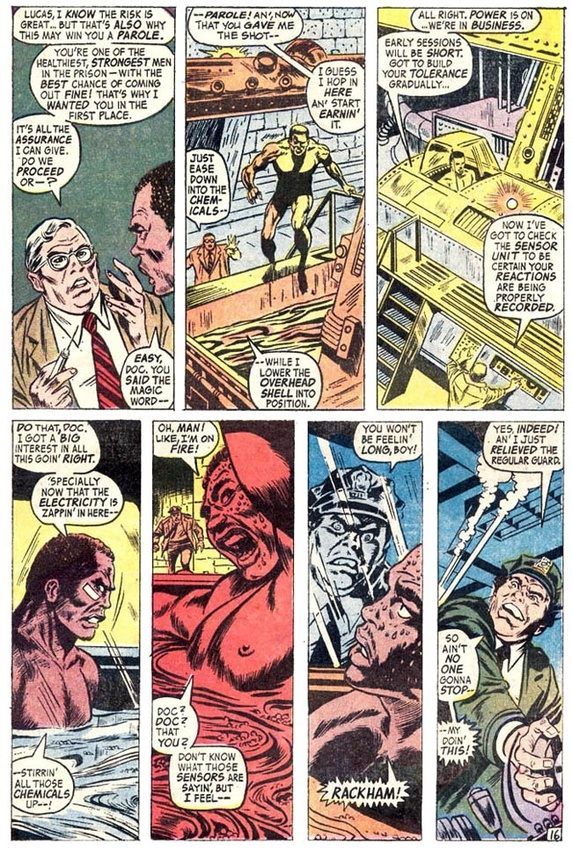One of the things I'm interested in is web accessibility, particularly for knowledge bases such as Stack Exchange. One part of this is alt text for images - a text alternative for images, which is used by screen readers, search engines, and when the image can't be displayed for whatever reason.
Some of the guidelines I've learned about alt text are that it should be "short and succinct", but at the same time, make sure that all of the information presented in the image is present in the alt text.
Generally, these guidelines don't tend to conflict; most images don't need super long descriptions to make sure that the text is serving the same purpose as the image. There is one major thing that's been a source of conflict between those guidelines, though: comic panels.
Over at Science Fiction & Fantasy, a lot of posts contain images of comic panels or pages. These tend to contain a lot of information packed into a small amount of space; there are the characters present in the scene, what they're doing, what they're saying, any other text boxes in the panel... it ends up being a lot of text to transcribe.
Here's an example that I'm struggling with, from a post about Luke Cage:

I'm not sure that it's worth transcribing all of the text; a screen reader would read all of that out at once without any way to go back to a different panel, for instance. However, if the text isn't transcribed, then that's information present in the image that's not available to people who can't see the image. It also means that people searching for the text from that image won't necessarily find it, interfering with the SEO aspect of alt text.
Posts can contain several images like these - the post which I took that image from has 14 image links, all to comic panels like that one.
What's the best approach for handling these, alt-text wise?

alttext for this purpose is impractical. Although possible, it would result in a very confusing implementation. The solutions proposed by Ypsy and Izquierdo are likely your best options, although they do not utilizealttext. I'm not sure if there's an standard convention for comics, but for accessibility in this context, providing a brief audio file that includes the characters' dialogues and describes the scene might be the most effective solution.